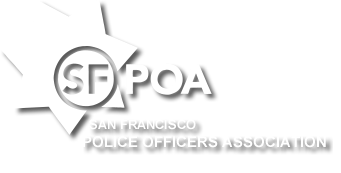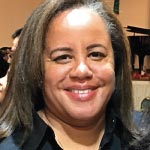The last time I wrote about the ever-diminishing protections for public employee free speech was in the fall of 2009 – in the wake of three Ninth Circuit decisions that made a complete hash of First Amendment jurisprudence. Two recent federal cases now provide both a step forward and a step back. Given the confused state of the law on this subject, even partial progress might be considered something of an improvement.
Let’s start with the good news: The Ninth Circuit Court of Appeals (the highest federal court with jurisdiction over California and other western states short of the U.S. Supreme Court) held unequivocally that a public employer may not interfere with a public employee’s First Amendment rights unless there is evidence that the employee’s actions have actually disrupted the workplace or are reasonably likely to do so in the future. Nichols v. Dancer (11 C.D.O.S. 7840)
This is important because previous federal court decisions (primarily from other Circuit Courts of Appeal) appeared to give public employers wide latitude to discipline employees based on an employer’s mere predictions of potential disruption to their operations caused by employee speech. The high watermark of this line of thinking is perhaps best illustrated in a decision by the Second Circuit which upheld the discipline of a city college professor for a controversial speech even though the trial court jury had determined that the speech did not actually disrupt the college’s operations. Jeffries v. Harleston, 52 F.3d 9 (2nd Cir. 1995). It should be mentioned, however, that while the way in which the Second Circuit reached its decision can and should be questioned, it is hard to be unsympathetic with the ultimate result, insofar as the college took action against the professor because the speech in question made derogatory comments about Jews.
In Nichols v. Dancer, the facts were far less sympathetic to the public employer and precisely the sort of scenario that I and other public employee advocates have long worried might result in a terrible decision if a court ever took the Jeffries v. Harleston line of reasoning too far. Fortunately, the Ninth Circuit got it right.
The plaintiff, Kathleen Nichols, was fired from her position as an assistant to a school district’s general counsel – who himself had recently been suspended – merely because she sat next to the general counsel, without speaking to him, during the school board meeting at which he was subsequently fired. The Ninth Circuit squarely rejected the school district’s contentions that Nichols’s actions threatened to disrupt operations, saying that it would not “rubberstamp [the school district’s] decision based on an assertion that Nichols’s association with [the general counsel] might have caused problems or been a reflection of the level of her disloyalty to the District.” As the Ninth Circuit put it, “Simply saying that there has been or will be disruption, without any supporting evidence, is not enough. . . . [T]he ‘because I said so’ approach is insufficient to establish a reasonable prediction of disruption let alone actual disruption.”
This ruling restores at last a fair degree of common sense to the law governing the free speech rights of public employees. While no public servant has a right to expression that significantly disrupts the operations of their employer, discipline against an employee for speech based on an employer’s bare and unsupported assertions that the speech in question might cause disruption violates the First Amendment. Indeed, it would be hard to imagine a public employee possessing any free speech rights if the mere act of sitting next to someone at a public meeting could be a legitimate basis for discipline.
Would that the second major case in this area to come down from the federal courts were as salutary as the first. But alas, as the old adage goes, what one hand giveth, the other taketh away, and this time the hand doing the taking was the United States Supreme Court.
In addition to the Speech Clause of the First Amendment, there is the Petition Clause, which protects the “the right of the people . . . to petition the Government for a redress of grievances.” Until now, the law had not been entirely clear as to whether the more rigorous standard a public employee must satisfy to show that his/her speech is protected by the First Amendment also applied to petitions, e.g., lawsuits, union grievances, etc. Unfortunately for public employees, the U.S. Supreme Court ruled in June that the test is the same for both the Speech Clause and the Petition Clause: an employee must demonstrate that his speech or petition – which presumably serves as the basis for employer discipline, which he seeks to redress via a lawsuit or grievance – is on a matter of “public concern.”
In Borough of Duryea Pennsylvania v. Guarnieri (11 C.D.O.S. 7462), a local borough’s terminated police chief, Charles Guarnieri, was reinstated by an arbitrator through a union grievance process. Upon returning to work, Guarnieri was confronted with a number of directives from his employer (e.g., no overtime without the borough council’s “express permission”) which he argued were the council’s way of “sending a message [that] ‘You might have won your arbitration, but we control you.’” He sued the borough under a federal civil rights statue, claiming that his union grievance was a petition protected by the Petition Clause of the First Amendment. A jury awarded him damages and attorney’s fees approaching $150,000, much of which was upheld by the Third Circuit Court of Appeals.
The U.S. Supreme Court vacated the Third Circuit’s decision and remanded the case, holding that the “public concern” test of the Free Speech clause applies with equal force to claims that a public employee’s rights under the Petition Clause have been violated. Aside from losing the damages he had been awarded, the plaintiff police chief will most likely find that this decision signals the beginning of the end of his lawsuit, given another Supreme Court free speech decision in 2006 – an opinion I inveighed against in a previous article – that speech concerning a public employee’s official duties is not a matter of “public concern.” (Garcetti v. Ceballos, 547 U.S. 410) The upshot of Garcetti has been that nearly all speech having anything to do with a public employee’s employment will not rise to the level of a “public concern.” With its recent decision in Guarnieri, the U.S. Supreme Court has made it clear that petitions by public employees against their employer in the form of grievances, lawsuits, etc., must now satisfy that same standard if an employee subsequently claims that the employer disciplined them for having filed such a grievance or lawsuit in the first place and seeks redress under the First Amendment.
So while the recent Ninth Circuit decision in Nichols may be cause for much rejoicing, the Guarnieri decision of the U.S. Supreme Court continues a disturbing trend of retrenchment by the courts on public employee First Amendment rights. One step forward, one step back, indeed.
“Roll the Union On . . .”

